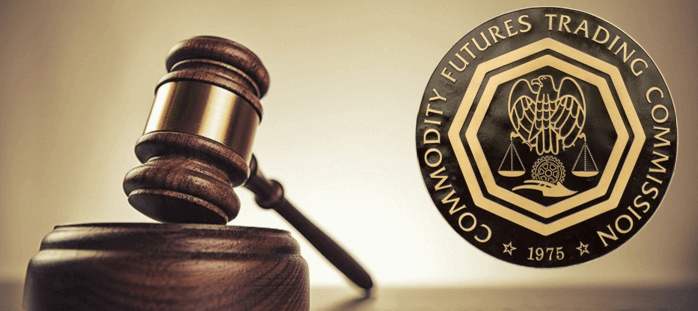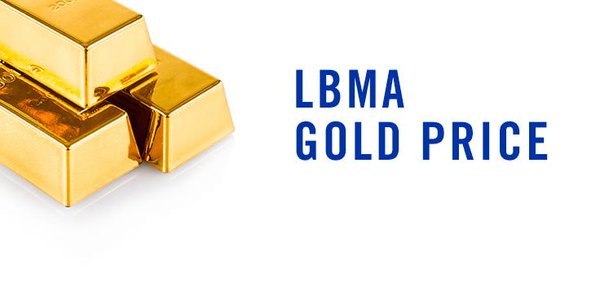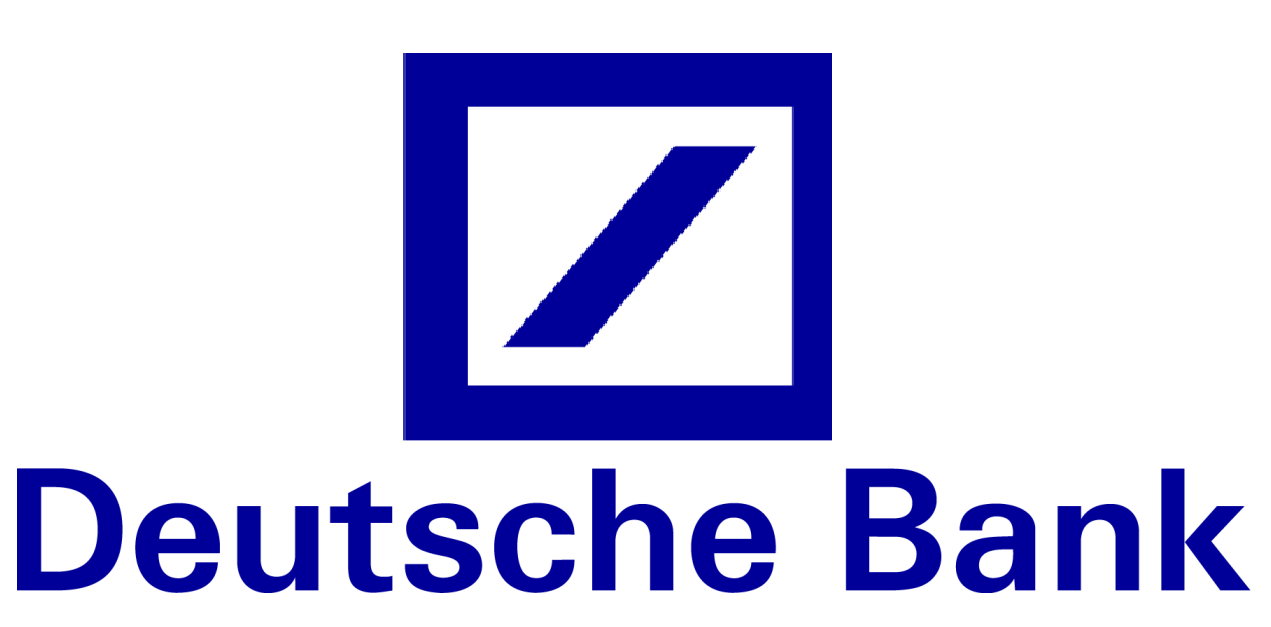Spoofing Futures, Banging Fixes: Same Banks & Trading Desks
On 29 January 2018, the Commodity Futures Trading Commission (CFTC) Division of Enforcement together with the Criminal Division of the US Department of Justice and the FBI announced criminal and civil enforcement actions against 3 global investment banks and 5 traders for involvement in trade spoofing in precious metals futures contracts on the US-based Commodity Exchange (COMEX). COMEX is by far the largest and most active futures exchange in the world for trading precious metals futures including gold futures contracts and silver futures contracts.
The CFTC is bringing the charges under what it calls “commodities fraud and spoofing schemes“. Spoofing of orders is illegal under the US Commodity Exchange Act. The 3 banks in question are Deutsche Bank, UBS, and HSBC. As part of the CFTC’s prosecution, Deutsche Bank is being fined US$ 30 million, UBS US$ 15 million, and HSBC US$ 1.6 million.
The CFTC’s Order against the banks maintains that from at least February 2008 to at least September 2014, Deutsche Bank traders were involved in a scheme to manipulate precious metals futures prices by spoofing orders for those futures contracts, and also by extension that this spoofing triggered customer stop-loss orders.
Similarly, the CFTC Order says that UBS traders on the UBS precious metals spot trading desk were involved in spoofing orders in gold futures and silver futures contracts from January 2008 to at least December 2013, and likewise triggering customer stop-loss orders.
In the case of HSBC, the CFTC says that HSBC, through its New York office, spoofed orders in gold futures and other precious metals. However, the CFTC Order does not specify the period under which HSBC is accused of engaging in such spoofing. This may be because, according to the CFTC, HSBC cooperated during the CFTC’s investigation and offered to settle. But overall, the spoofing by one or more of the named banks was said to have run from January 2008 to at least September 2014.
As part of the process, the CFTC also announced civil enforcement actions against precious metals traders Andre Flotron formerly of UBS, and James Vorley and Cedric Chanu formerly of Deutsche Bank for what the CFTC describes as “spoofing and engaging in a manipulative and deceptive scheme in the precious metals futures market“.
According to the Department of Justice (DoJ) press release on the matter, Vorley (a UK citizen) and Chanu (a French citizen) are being charged in a criminal complaint in the Northern District of Illinois court with “conspiracy, wire fraud, commodities fraud, and spoofing offenses in connection with executing a scheme to defraud involving both solo and coordinated spoofing on the COMEX“. During that time, Vorley was based in London with Deutsche bank and Chanu was based in London and Singapore with Deutsche Bank.
Flotron is charged in an indictment in the District of Connecticut for “conspiracy to commit spoofing, wire fraud, and commodities fraud" during the time when he worked at UBS as a precious metals trader on the UBS trading desks in Zürich, Switzerland, and Stamford, Connecticut USA.
The DoJ statement also names Edward Bases and John Pacilio, and says that Bases and Pacilio are charged in a criminal complaint with “commodities fraud in connection with an alleged scheme to engage in both solo and coordinated spoofing on the COMEX“. Bases was at Deutsche Bank until June 2010 at which point he moved to a unit of Merrill Lynch. Pacilio worked for a unit of Merrill Lynch during 2010 and 2011 when some of his trade spoofing is alleged to have taken place.
Note that according to the DoJ “a complaint, information, or indictment is merely an allegation, and all defendants are presumed innocent until proven guilty beyond a reasonable doubt in a court of law“.
For an excellent explanation of some of the spoofing activities that these traders are accused of have engaged in, please see the recent article ‘US Gold & Silver Futures Markets: “Easy” Targets‘ by specialist researcher Allan Flynn posted on the BullionStar website and on his own ‘COMEX We have a Problem’ website here.
Spot, Fixes and Futures in the Gold and Silver Markets
While gold and silver futures trading is one side of the wholesale precious metals markets, it is not the full picture, because as well as COMEX, the over-the-counter (OTC) London Gold and Silver Markets are key gold and silver trading venues for these same investment banks, as well as key components of gold and silver price determination. And central to the London Gold Market and London Silver Market are the daily fixing auctions for gold and silver.
The investment bank precious metals traders who trade gold and silver in the wholesale market do so not just through exchange traded futures contracts or OTC contracts, but both. And they constantly trade across the London and COMEX ‘venues’ at the same time. In both gold and silver, predominant price discovery for the international gold price and for the international silver price occurs in the London OTC Market and on COMEX.
Price movements in one location, for example on COMEX futures, get instantly reflected in the London OTC spot quotes, and vice versa. Therefore price quotes in the London market, including opening prices and round prices for the London daily Fixings can be influenced by moving the futures prices. For example, if there is collusion among traders to push the futures prices lower so as to benefit other traders who have positions based on Fixing levels, this can be done by the trader from one bank pushing the futures price lower, while a trader at a second bank benefits from this movement in terms of his exposure to the Fixing price which has also moved lower. Such price movements are documented in the ‘Final Notice’ that the UK Financial Conduct Authority (FCA) levied against Barclays Bank and one of its precious metals traders in May 2014 (See below for details).
As highlighted below, the majority of the banks mentioned in the CFTC fines were also central to these gold and silver fixings, and astoundingly one of the traders mentioned above and subject to the CFTC and DoJ actions, James Vorley, was even a director of both of the private companies that oversaw the London Gold and Silver Fixings.
With the CFTC / DoJ fines, complaints and indictments against the banks and their traders for manipulating gold and silver futures prices now in the public arena, the question of manipulation of the London Gold and Silver fixing auctions now comes back in focus, and the question now needs to be asked – where are the regulators in investigating (and perhaps prosecuting) banks and traders for gold and silver fixings manipulation?
Because even a superficial look at the banks and traders, the trading desks and their operations, the trader chat room transcripts, and the connections between the futures and fixings at the time of the fixings should give even the most dullard regulators and prosecutors pause for thought.
Deutsche Bank and HSBC – New York Futures and London Fixings
As a reminder, the London Silver Fixings were a daily auction of (paper) silver at midday in London that operated up until August 2014 when they were replaced by the LBMA Silver Price auction. The London Gold Fixings were a twice daily auction of (paper) gold at 10:30 am and 3:00 pm in London that operated up until March 2015 when they were replaced by the LBMA Gold Price auction.
The London Silver Fixings were administered by a private company called London Silver Market Fixing Ltd (LSMFL) whose three members were Deutsche Bank, HSBC and the Bank of Nova Scotia. Deutsche Bank, HSBC and Bank of Nova Scotia were also the only 3 entities allowed to take directly participate in the silver fixings, and each had become a member of the silver fixings by acquiring one of the 3 traditional companies that had run the fixings – ScotiaBank acquired Mocatta in 1997, Deutsche acquired the old Sharps Pixley in 1993, and HSBC had acquired Samuel Montagu and rebranded as HSBC during its 1990s reorganisation.
The London Gold Fixings were administered by a private company called London Gold Market Fixing Ltd (LSMFL) which had 5 members, namely Deutsche Bank, HSBC, Bank of Nova Scotia, Barclays, and Societe Generale (SocGen). Only these 5 banks were allowed to directly participate in the gold fixings. These 5 banks were also the only banks in the gold fixings from 2004 all the way to 2014.
So from “January 2008 to at least September 2014“, the period stipulated by the CFTC that covers manipulation of gold and silver futures, the same banks, i.e. Deutsche Bank and HSBC, were at all times active members of the daily gold and silver fixings in London.
Even more amazingly, James Vorley, the Deutsche Bank trader who is the subject of the CFTC / DoJ accusation of “conspiracy, wire fraud, commodities fraud, and spoofing offenses" on COMEX was a Director of both London Silver Market Fixing Ltd and London Gold Market Fixing Ltd from September 2009 until May 2014, which is all the way through the period of ‘at least February 2008 to at least September 2014’, when Deutsche Bank precious metals traders were involved in a scheme to manipulate precious metals futures prices by spoofing orders for those futures contracts. You couldn’t make this up!
Vorley, along with Deutsche’s Kevin Rodgers resigned from the London Gold and Silver Market fixing companies in May 2014, when Deutsche Bank dropped out of the daily gold and silver fixing auctions. Matthew Keen of Deutsche Bank had previously resigned as a director of the gold and silver fixing companies in January 2014 when he left the bank and was replaced by Rodgers who was Global Head of Foreign Exchange at Deutsche Bank at that time. But curiously, Rodgers also left Deutsche at the end of April 2014.
For a full rundown of all the directors of London Gold Market Fixing Ltd, and a timeline of the Keen – Rodgers – Vorley – Deutsche departures, see the excellent article on ZeroHedge from May 2015 titled ‘From Rothschild To Koch Industries: Meet The People Who “Fix" The Price Of Gold’.
There is plenty written elsewhere on how the LBMA maintained its stranglehold over the London gold and Silver reference price benchmarks when the old tarnished fixings were no longer viable and the bullion banks running those fixings had to quickly pretend to distance themselves from the fixing while at the same time maintaining total control over the new versions of the auctions. But in summary, in August 2014, when the new LBMA Silver Price auction was launched by the LBMA with just 3 bank members, HSBC and Bank of Nova Scotia continued as 2 of these members. When the LBMA Gold Price auction was launched in March 2015, the existing incumbents of the old Gold Fixings namely Barclays, HSBC, Bank of Nova Scotia and SocGen, rejoined the new auction along with its new members, UBS and Goldman Sachs.
Barclays Mini-Puke: Gaming the Gold Fixing
In May 2014, the UK Financial Conduct Authority (FCA) fined Barclays Bank £26 million for systems and controls failings and conflicts of interests in relation to the London Gold Fixing auctions of which it was one of the 5 bullion bank participants. According to the FCA, these failings persisted from 2004 (when Barclays joined the fixings) until 2013. The year 2004 was also when the gold and silver fixings stopped being conducted in a room in Rothschilds offices and began to be conducted remotely.
As part of the May 2014 fines of Barclays, the FCA also fined Daniel Plunkett, one of the Barclays London-based precious metals traders, £95,000. While the fine for Plunkett was specifically to penalise his placement and cancellation of orders which were intended to manipulate prices within the rounds of the fixing, the commentary supplied by the FCA on the case is interesting in that it shows how gold futures price movements external to the fixings also very much influenced the fixing round prices during the auction that the FCA penalised Plunkett for.
At the start of the 28 June 2012 Gold Fixing at 3:00 p.m., the Chairman proposed
an opening price of USD1,562.00. However, the proposed price quickly dropped
to USD1,556.00, following a drop in the price of August COMEX Gold Futures
(which was caused by significant selling in the August COMEX Gold Futures
market, independent of Barclays and Mr Plunkett).
You can see here the interactions and influences that the COMEX gold futures prices movements had on the opening price that the Gold Fixing Chairman proposed to the begin the auction with. And now that we know there was collusion between the various precious metals traders across the bullion banks, it is not difficult to accept that the traders from one bank could be moving the futures lower to not only help themselves but as a favour to precious metals traders at other cartel banks that were also involved in the collusion schemes.
Banging the Fixes – Chat Room Transcripts from Class Action Suits
But there is also direct evidence of trader collusion to manipulate prices in the London gold and silver fixings in the form of trader chat room transcripts. This is not speculation, it is fact. Facts that have been documented in class action proceedings in the New York courts brought by plaintiffs against the bank member of the London Gold and Silver Market Fixing companies.
Again we turn to Allan Flynn, who was probably first to call attention to the manipulation of the silver market by these same banks with his extensive and succinct coverage of the evidence from the New York class action suits in his 8 December 2016 article ‘How to Trigger a Silver Avalanche by a Pebble: “Smash(ed) it Good”‘ posted on the BullionStar website and on Allan’s website here, and in his follow-up article from 14 December 2016 titled “When Gold Pops 1430 We Whack It“, posted on his website and on the ZeroHedge website here.
In the silver class action suit against Deutsche Bank, HSBC, the Bank of Nova Scotia, and UBS, Deutsche agreed in April 2016 to settle with the plaintiffs and to produce “instant messages, and other electronic communications" as part of the settlement. See BullionStar article ‘Deutsche Bank agrees to settle with Plaintiffs in London Silver Fixing litigation‘ for full details of the April 2016 announcement.
Attorneys for the plaintiffs subsequently, as Allan Flynn documented “submitted samples of dozens of chat room messages between UBS and Deutsche Bank“, indicating “many efforts to artificially suppress gold prices, and to manipulate gold prices at the time of the Fixing.”
“One chat see’s a Deutsche Bank trader confirming with a UBS trader his trading had indeed influenced the Gold Fix: ‘u just said u sold on fix.‘ The UBS traded replied ‘yeah,’ ‘we smashed it good.‘
Another transcript example contained the following exchange:
“During a trading day which had been less successful the Deutsche Bank trader assured his opposite trader from Bank of Nova Scotia that ‘at least the fix will be fun . . . make it all back there!!!!!!‘"
So here we have precious metals traders actually colluding to artificially move the price levels on the fixings.
Technology Facilitated the Manipulation of the Fixes since 2004
In June 2015, I wrote an article on the BullionStar website titled “The pre-2015 London Gold Fixings – More technologically advanced than reported" in which I set out substantial evidence that the former Gold Fixings up until March 2015 were not some archaic dial-in telephone based auction using paper and pencils to set the price as the mainstream financial media choose to believe, but that the auctions since 2004 in both gold and silver employed sophisticated web-based technology apps, trading software, messaging apps and chat apps, all of which could also facilitate collusion and price manipulation across multiple trading desks in ‘rival’ banks.
When Rothschild pulled out of the Gold Fixings in 2004, Barclays took Rothschild’s place and the fixings moved to a remote model where traders from each of the 5 members banks of the Gold Fixing coordinated remotely instead of meeting twice a day face to face. At the same time, the fixing members introduced this new communication technology to assist their twice daily fixes.
In November 2014, the Swiss financial regulator FINMA announced that an investigation of UBS had found manipulation and attempted manipulation of by UBS Zurich employees of forex and precious metals benchmarks. At the time, Mark Branson, FINMA’s CEO said that “we have [also] seen clear attempts to manipulate fixes in the precious metals markets.”
According to FINMA, it found that chat groups between traders at multiple banks were central to how the manipulation was coordinated:
“In the improper business conduct in foreign exchange and precious metals trading, electronic communication platforms played a key role. The abusive practices were evidenced in the information exchanged between traders in chat groups. FINMA examined thousands of suspicious chat group conversations between traders at multiple banks.“
The introduction of new technology and chat apps from 2004 is also highly correlated with academic research findings showing “a decade of manipulation" of the gold fixing from 2004 until 2013. As highlighted in the Bloomberg article “Gold Fix Study Shows Signs of Decade of Bank Manipulation“
“Abrantes-Metz and Metz screened intraday trading in the spot gold market from 2001 to 2013 for sudden, unexplained moves that may indicate illegal behavior. From 2004, they observed frequent spikes in spot gold prices during the afternoon call. The moves weren’t replicated during the morning call and hadn’t happened before 2004, they found.
Large price moves during the afternoon call were also overwhelmingly in the same direction: down.
On days when the authors identified large price moves during the fix, they were downwards at least two-thirds of the time in six different years between 2004 and 2013. In 2010, large moves during the fix were negative 92 percent of the time, the authors found.
There’s no obvious explanation as to why the patterns began in 2004, why they were more prevalent in the afternoon fixing, and why price moves tended to be downwards, Abrantes-Metz said in a telephone interview this week."
Well, there is an obvious explanation. The downward price movements identified by Abrantes-Metz and Metz started in 2004 because that’s when the London gold fixings went to a remote model and technology including chat apps was introduced. The suspicious price movements were more prevalent in the London afternoon because that was also the New York morning where COMEX gold futures were more active and where New York based traders could force the futures down causing a corresponding drop in the opening prices and round prices in the fixing auctions.
Conclusion
Prosecuting banks and traders for price manipulation on COMEX futures while ignoring the far larger London market and its gold and silver fixings looks like a job half done. Trading desks and their traders are agnostic to trading venues and with interlinked markets, the COMEX and the London Fixings are two sides of the same coin.
With blatant evidence that the same banks and traders were involved in both markets, and with actual chat room transcripts now confirming that precious metals traders across multiple banks were colluding in fixing price manipulation, then why are their no active regulatory investigations of trader manipulation of the London Gold and Silver Fixings?
Is it because of lack of jurisdictional authority or are the regulators and criminal enforcement agencies such as the FCA, DoJ, FINMA and the German BAFIN too terrified of opening a can of worms into the huge liabilities that would arise from proving a decade long criminal manipulation of the London Gold and Silver price benchmarks and that were used throughout the world the value of everything from ISDA contracts to institutional precious metals products, to ETFs.
Popular Blog Posts by Ronan Manly
 How Many Silver Bars Are in the LBMA's London Vaults?
How Many Silver Bars Are in the LBMA's London Vaults?
 ECB Gold Stored in 5 Locations, Won't Disclose Gold Bar List
ECB Gold Stored in 5 Locations, Won't Disclose Gold Bar List
 German Government Escalates War On Gold
German Government Escalates War On Gold
 Polish Central Bank Airlifts 8,000 Gold Bars From London
Polish Central Bank Airlifts 8,000 Gold Bars From London
 Quantum Leap as ABN AMRO Questions Gold Price Discovery
Quantum Leap as ABN AMRO Questions Gold Price Discovery
 How Militaries Use Gold Coins as Emergency Money
How Militaries Use Gold Coins as Emergency Money
 JP Morgan's Nowak Charged With Rigging Precious Metals
JP Morgan's Nowak Charged With Rigging Precious Metals
 Hungary Announces 10-Fold Jump in Gold Reserves
Hungary Announces 10-Fold Jump in Gold Reserves
 Planned in Advance by Central Banks: a 2020 System Reset
Planned in Advance by Central Banks: a 2020 System Reset
 Gold at All Time Highs amid Physical Gold Shortages
Gold at All Time Highs amid Physical Gold Shortages






 Ronan Manly
Ronan Manly 0 Comments
0 Comments














